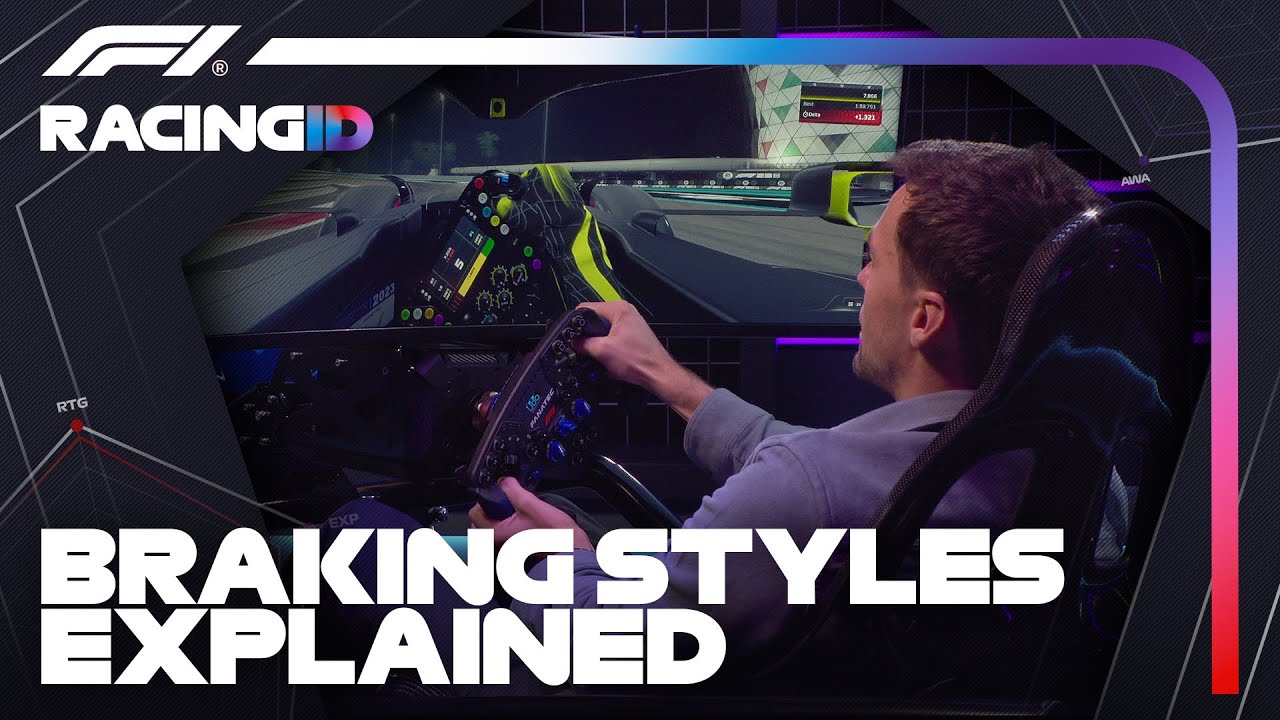Formula 1
Diving into F1 Braking Techniques
The art of braking in Formula 1 is a nuanced and complex skill that can make or break a driver’s performance on the track. Different drivers employ various styles to optimize their entry into corners, control their speed, and maintain the delicate balance between aggression and control. One common technique is the conventional braking shape, which involves hitting the brakes hard and late to maximize braking capacity before entering a corner. This aggressive approach was favored by former drivers like Jolyon Palmer and Kevin Magnussen, who would push the limits of their brakes to the edge of locking up. The goal is to arrive at the corner with the right amount of speed to avoid mistakes or, worse, ending up in the barriers. This high-pressure style demands precise timing and a keen sense of control.
On the other hand, drivers like Nico Hulkenberg adopt a more conservative braking approach. Instead of slamming the brakes at the last possible moment, Hulkenberg would apply the brakes in a softer, more gradual manner. This technique results in a less dramatic pitch of the car, leading to a more stable platform as it enters the corner. This subtlety in braking allows for better speed carry into the turn, offering a smoother and potentially safer entry. Modern F1 cars, with their stiff suspensions and ground-effect aerodynamics, have reduced the dramatic pitch changes that characterized older models. Nevertheless, the finesse required in braking remains a critical skill, as it sets the stage for the driver’s success in navigating the twists and turns of the circuit.
Conventional Braking Shape: The Aggressive Approach
In Formula 1, conventional braking shape involves hitting the brakes hard and late to maximize the braking capacity before entering a corner. This aggressive style was once a hallmark of drivers like Jolyon Palmer and Kevin Magnussen. They would push their brakes to the edge of locking up, hoping to maintain the perfect speed for avoiding mistakes or, at worst, crashing into barriers. This technique demands precise timing and a sharp sense of control to navigate the twists and turns of the circuit successfully.
The goal here is to arrive at the turning point with the right amount of speed. If the driver is too quick at this stage, they risk oversteer, understeer, or even a crash. The method demands a delicate balance between aggression and control, a challenging feat given the high-stakes environment of F1 racing.
Nico Hulkenberg’s Conservative Technique
On the other side of the spectrum, current drivers like Nico Hulkenberg prefer a softer, more gradual braking approach. Instead of slamming the brakes at the last possible moment, Hulkenberg applies them in a gentler manner. This results in less dramatic pitch changes, creating a more stable platform as the car enters the corner.
Hulkenberg’s style allows for better speed carry into the turn, offering a smoother and potentially safer entry. With modern F1 cars running stiff suspensions and ground-effect aerodynamics, dramatic pitch changes are less of a factor compared to older models. Even so, Hulkenberg’s braking finesse sets the stage for a stable corner entry, emphasizing smoothness over aggression.
The Role of Lift and Coast in Modern Racing
Lift and coast is another braking technique often employed in race trims. Engineers may advise drivers over the team radio to use this method to save fuel or preserve tires. The driver lifts off the throttle before hitting the brakes slightly later than usual. It may look the same to an outsider, but the technique allows for fuel savings and better tire management.
As the driver lifts off the throttle about 50 to 100 meters earlier than the corner, they decelerate without the engine’s force, requiring them to brake later to make up for the slower speed. This method demands a nuanced understanding of timing and speed control, as arriving slower means that the braking point changes. The driver needs to adapt quickly to make the corner efficiently while saving fuel, demonstrating the intricate balance F1 drivers must maintain.
Importance of Braking Techniques for Cornering
Whether using a conventional, aggressive braking shape or a more conservative approach like Hulkenberg’s, braking techniques are crucial for setting up every corner. In F1 racing, the corners are where the real skill shines through, making braking one of the most vital aspects. The type of braking technique used can significantly influence a driver’s ability to manage speed, control the car, and navigate each corner safely and effectively.
Modern Formula 1 cars, with their advanced aerodynamics and stiff suspensions, have altered the dynamics of braking. However, the fundamental principles remain the same. Drivers must choose the braking style that best suits the car’s setup and their driving preferences, balancing the fine line between speed and control to excel on the track.
In Formula 1, braking techniques are as diverse as the drivers themselves. From the aggressive, hard-braking styles of drivers like Jolyon Palmer and Kevin Magnussen to the more conservative, smooth approach of Nico Hulkenberg, each driver’s unique method significantly impacts their performance on the track.
Modern advancements in car aerodynamics and suspensions have somewhat reduced the dramatic pitch changes associated with older models, yet precision in braking remains paramount. The ability to effectively manage speed, balance, and control while navigating corners can be the difference between winning and losing a race.
Furthermore, strategies like lift and coast highlight the intricate balance required in F1 racing. By lifting off the throttle before braking, drivers can save fuel and manage tire wear, demonstrating the nuanced skill set demanded by this high-stakes sport.
Braking is not just about slowing down; it’s a critical component of the racing strategy that can influence every aspect of a driver’s approach to the track. Understanding and mastering various braking techniques are essential for success in the world of Formula 1.


